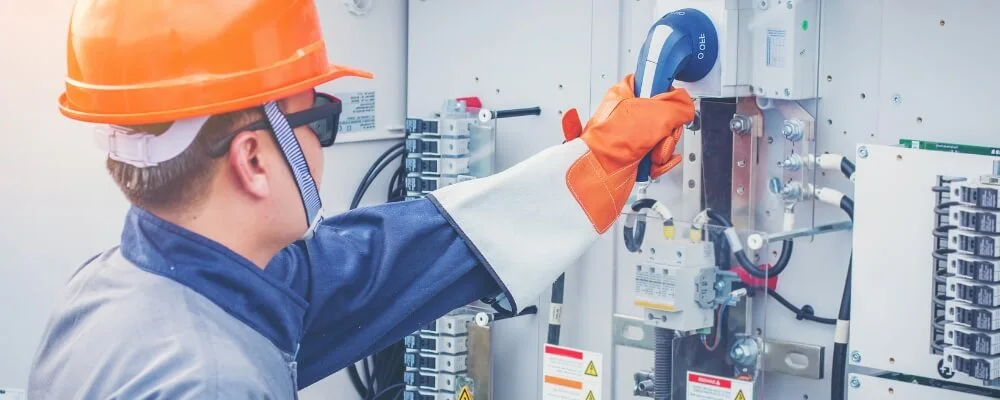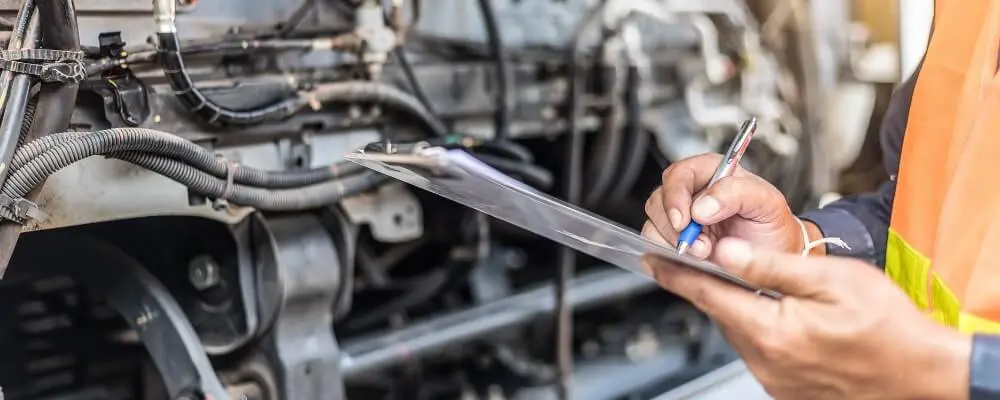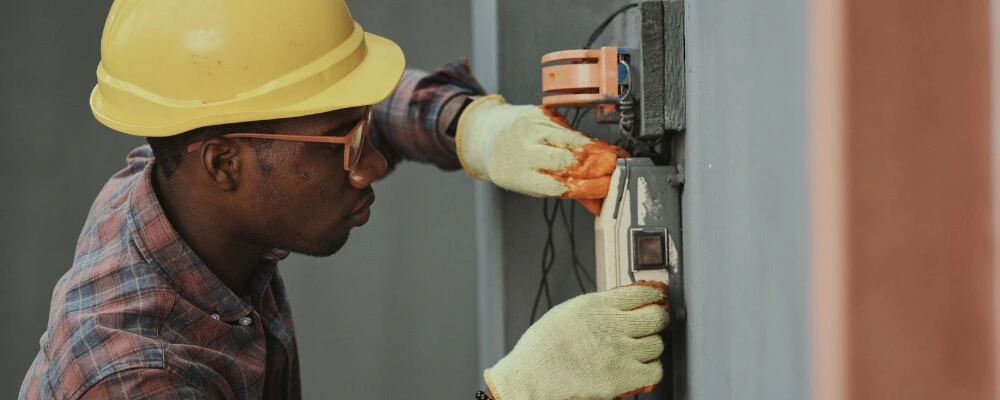Preventive maintenance is an essential strategy in equipment engineering and management, designed to optimize machinery and systems’ useful life and performance. Through programmed interventions and specific techniques, the aim is to anticipate and prevent failures before they occur, thus guaranteeing efficient operation and reducing costs in the long term. But what are really the benefits of this practice?
What different types of preventive maintenance exist, and how are they implemented? In this blog, we’ll break down these questions, providing a comprehensive guide on preventative maintenance, its importance, and how you can get the most out of it in your industry or business. Join us on this journey towards optimization and prevention!
What Is Preventive Maintenance? Definition
Preventive Maintenance refers to the proactive measures and routines to prevent equipment, machines or systems from breaking down or failing. The main objective of this type of maintenance is to extend the useful life of the equipment, optimize its performance and avoid unexpected failures that can lead to more significant damage or higher repair costs. By scheduling regular inspections, cleaning, lubrication, and parts replacement, potential problems can be detected and addressed before they become serious.
Implementing a preventive maintenance program often involves a systematic schedule based on the manufacturer’s recommendations, past performance data, or specific equipment operating conditions. This ensures that tasks are performed at predetermined intervals, either based on time (for example, every six months) or usage (for example, every 1,000 operating hours). This approach not only helps reduce the risks of unplanned equipment breakdown but also helps improve safety, reduce downtime and save costs in the long run.

Benefits Of Preventive Maintenance
Preventive maintenance offers multiple benefits for equipment and systems. Some of the most prominent are described below:
- Failure and Breakdown Reduction: By detecting and addressing potential problems before they become serious, the chances of unplanned failures and costly emergency repairs are minimized.
- Increased equipment life: By keeping equipment in good condition and making necessary adjustments or replacements on time, its operational life is extended, avoiding the need for premature replacements.
- Long-term cost savings: Although preventive maintenance involves an initial cost, in the long term, it is often cheaper than corrective maintenance since it prevents more expensive and time-consuming repairs.
- Performance optimization: Well-maintained equipment tends to operate more efficiently, which can lead to better performance and less consumption of resources such as energy.
- Safety improvement: Keeping equipment in good condition reduces the risk of accidents or failures that could endanger the safety of operators or users.
- Reduced downtime: By preventing failures and planning maintenance at appropriate times, downtime is minimized, which can be critical to a business’s productivity.
- More effective planning: With a preventive maintenance program, companies can better plan their operations, allocate resources more efficiently and avoid unexpected surprises.
- Warranty Preservation: In some cases, regular maintenance is a condition for maintaining the validity of the equipment warranty, thus protecting the company’s investment.
In summary, preventive maintenance not only ensures the proper functioning of the equipment but also represents a strategic investment that can offer significant savings, improve safety and optimize performance in the long term.

Different Types Of Preventive Maintenance
Preventive maintenance refers to the planned and systematic actions that are carried out to keep the equipment in optimal condition and prevent failures or breakdowns. Depending on the needs and characteristics of the equipment and the industry in question, preventive maintenance can be classified in different ways. Some of the most common types of preventative maintenance are:
- Time-Based Maintenance: This type of maintenance is performed at regular intervals, regardless of the condition of the equipment. For example, a machine may require maintenance every six months or after certain hours of operation. It is similar to changing the oil in a car every certain number of kilometres driven.
- Condition-Based Maintenance: Rather than following a fixed schedule, this type of maintenance is performed when inspections or monitoring indicate it is necessary. For example, a component can be replaced when specific wear is observed, not simply after a predetermined time.
- Predictive Maintenance: This is a more advanced approach than CBM. It uses monitoring technologies, such as vibration analysis, thermography or ultrasound, to predict when equipment will likely fail, allowing maintenance to be planned just before it happens.
- Usage-Based Maintenance: This type is performed after the equipment has operated for a specified number of cycles, hours, or units produced. It is common in equipment with wear clearly related to its use, such as machine tools.
- Systematic preventive maintenance: It involves the replacement of components at fixed intervals, regardless of their condition. It is based on the idea that certain components have a predictable lifetime, after which they are likely to fail.
- Opportunity Maintenance: Performed when there is a convenient opportunity, such as when a machine is down or out of service for other reasons. Although maintenance may not be essential at the time, the opportunity is taken to perform it and avoid possible interruptions in the future.
- Risk-Based Maintenance: This approach considers both the probability of equipment failure and the consequences of such failure. Priority is given to maintaining equipment where a failure would have serious repercussions, be it in terms of safety, financial impact or production.
Each preventive maintenance type has advantages and is suitable for different situations. Choosing the right approach depends on the nature of the team, the cost of outages, the availability of monitoring tools, and the organization’s priorities.

How To Do Preventive Maintenance
Preventive maintenance is a systematic practice to keep equipment and systems in optimal condition and avoid unforeseen failures. Although the specific steps may vary depending on the type of equipment or machine, here is a general process for performing preventative maintenance:
1. Equipment Identification
The first step in a preventative maintenance program is to know exactly which equipment is in your inventory and which requires maintenance. This involves listing them and collecting detailed data on each one. The manufacturer, model, and date of purchase information provide context about the equipment’s age, origin, and possibly durability. Additional details, such as usage history and technical specifications, can tell you about individual maintenance needs and how often they need serviced.
2. Study The Manufacturer’s Manual
The manual is a primary source of information. Manufacturers often include recommendations based on tests and studies conducted on their equipment. Understanding these guidelines is essential as they provide a solid foundation on how and when to perform maintenance. Also, some specific procedures or warnings may be present in the manual to ensure the correct operation of the equipment.
3. Set A Schedule
A preventive maintenance schedule ensures that important checks are not overlooked. When deciding on a temporary or use basis, it is essential to consider equipment wear and tear. For example, a heavily used machine may require service based on hours of operation, while a less used machine may require periodic service.
4. Task List
Clarifying the activities to be carried out ensures that each review is thorough and systematic. This avoids skipping key steps that could compromise the integrity of the equipment. Plus, it provides consistent guidance for maintenance personnel, ensuring everyone follows the same procedures.
5. Tools And Materials
Without the proper tools, maintenance can be ineffective or even harmful. Preparing ahead of time, making sure you have everything on hand, streamlines the process and ensures it’s done correctly. Plus, it prevents interruptions that could unnecessarily prolong equipment downtime.

6. Documentation
Recording each maintenance intervention creates a detailed history that can be invaluable. These records allow you to track wear over time, identify patterns or recurring problems, and facilitate decisions about replacements or upgrades. Also, in the case of audits or certifications, proper documentation may be essential.
7. Staff Training
Maintenance is only as good as the people who do it. Ensuring staff are properly trained ensures procedures are followed correctly, problems are identified, and interventions are carried out effectively and safely.
8. Review And Adjustment
Preventive maintenance is not static. Over time, as equipment ages or conditions change, maintenance practices may need to be modified. This regular review helps keep the program up-to-date and aligned with the team’s real needs.
9. Security
Safety is paramount. Before intervening on any equipment, ensuring no electrical, mechanical or other risks is essential. Safe practices protect maintenance personnel and prevent further damage to equipment.
10. Feedback
Communication between the personnel who operate the equipment and those who maintain it is crucial. Those who use the equipment daily may notice subtle changes or emerging issues that are not apparent during maintenance checks. Establishing open lines of communication and fostering an environment where feedback is valued can significantly improve the effectiveness of the maintenance program.
Conclusion
Preventive maintenance is not just another item on a company’s to-do list but a strategic investment in the longevity and efficiency of your machinery and systems. Through early identification and proactive intervention, companies can reduce unplanned outages, extend equipment life, and generate significant savings.
As we have explored in this blog, there are different types of preventive maintenance, each with its own application and benefits. Implementing a well-structured maintenance program is essential for any organization seeking to optimize its operations and ensure customer and employee satisfaction and safety.
In short, preventive maintenance is a good practice and a cornerstone for operational excellence. Make preventative maintenance a priority, and watch your business flourish and grow stronger!

